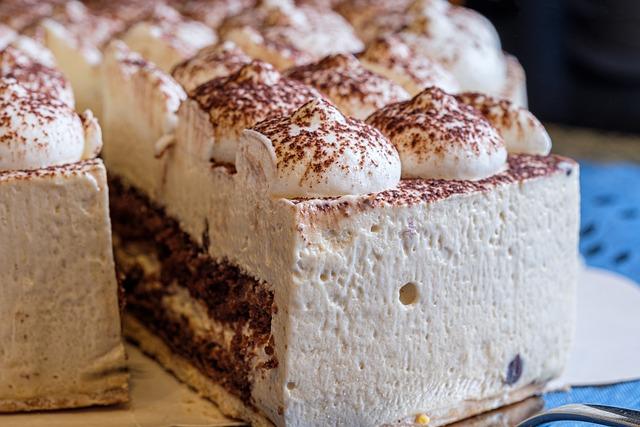How Many Calories Does Sprints Burn? Unveiling the Fitness Secrets!

Are you ready to sprint your way to fitness while shedding those unwanted calories? In our quest to unravel the hidden secrets of fitness, we delve deep into the world of sprinting and its calorie-burning potential. Join us as we unlock the mysteries of this high-intensity exercise and reveal just how many calories those sprints can torch. From the science behind it to practical tips, prepare to arm yourself with knowledge as we embark on this thrilling journey towards a fitter, healthier you. Lace up your shoes and let’s sprint towards a calorie-burning revolution!
Contents
- 1. The Science Behind Sprinting: Understanding the Calorie-Burning Mechanism
- 2. Sprinting vs. Other Cardio Workouts: Discovering the Superior Calorie-Burning Potential
- 3. The Impact of Intensity: How High-Intensity Sprinting Amplifies Calorie Burn
- 4. Duration Matters: Optimal Sprinting Time for Maximum Caloric Expenditure
- 5. Boosting Calorie Burn with HIIT: Harnessing the Power of High-Intensity Interval Training
- 6. Incorporating Resistance Training: Maximizing Calorie Burn with Sprinting Variations
- 7. Maximizing Your Sprinting Potential: Effective Techniques to Enhance Caloric Expenditure
- Sprinting and Caloric Expenditure: Unleashing the Fitness Secrets!
- 8. Fueling Your Sprinting Workouts: Nutrition Tips to Support Optimal Calorie Burn
- 9. Monitoring Progress: Tracking Calories Burned during Sprinting for Fitness Success
- 10. Sprinting for Weight Loss: Designing a Personalized Sprinting Routine for Fat-Burning Goals
1. The Science Behind Sprinting: Understanding the Calorie-Burning Mechanism
Sprinting is a high-intensity exercise that not only gets your heart pumping but also torches calories. If you’re looking to shed some pounds or just want to engage in an exhilarating workout, sprints are an excellent choice. But how many calories do they actually burn? Let’s unravel the fitness secrets behind sprinting and understand the calorie-burning mechanism.
During a sprint, your body undergoes several metabolic changes that result in calorie burning. Here’s a breakdown of the science behind sprinting and the calories burned:
-
Increased metabolism: Unlike steady-state cardio exercises, sprints elevate your metabolism even after your workout. This means your body continues to burn calories long after you’ve finished sprinting. It’s the famous "afterburn effect" or excess post-exercise oxygen consumption (EPOC) that makes sprints so effective for fat loss.
-
Muscle engagement: Sprinting engages multiple muscle groups simultaneously, including your core, glutes, hamstrings, quads, and calves. The more muscles you recruit during an exercise, the more calories you burn. This makes sprinting a highly efficient way to not only burn calories but also strengthen and tone your entire body.
- Intensity matters: The intensity of your sprints directly influences the number of calories burned. The faster and more vigorous your sprints, the higher the calorie expenditure. So, if you’re looking for maximum calorie burn, push yourself to sprint as fast as possible for short intervals.
To give you an idea of the calorie-burning potential of sprints, here’s a simple breakdown:
- A person weighing 150 pounds can burn approximately 100-150 calories in just 10 minutes of sprinting.
- For a person weighing 200 pounds, the calorie burn increases to around 150-200 calories in the same timeframe.
Remember, these numbers are estimates and can vary depending on various factors such as your weight, intensity, fitness level, and duration of sprinting. So, lace up your running shoes, hit the track, and unleash the calorie-burning power of sprints on your fitness journey!
2. Sprinting vs. Other Cardio Workouts: Discovering the Superior Calorie-Burning Potential
Sprinting has long been hailed as one of the most effective calorie-burning workouts, but how does it stack up against other cardio exercises? Prepare to be amazed as we delve into the superior calorie-burning potential of sprints!
-
Blitzing the Calories: When it comes to torching calories, nothing quite compares to the high-intensity nature of sprints. In a 30-minute sprint session, you can burn an impressive 300 to 450 calories, depending on factors like weight and intensity. Compare that to other forms of cardio like jogging or cycling, where you may only burn around 200 to 300 calories in the same amount of time. Sprinting engages multiple muscle groups simultaneously, resulting in a more efficient and intense calorie burn.
-
The Afterburn Effect: One of the key advantages of sprinting is its ability to boost your metabolism long after the workout is over. This phenomenon, known as the afterburn effect or excess post-exercise oxygen consumption (EPOC), means that your body continues to burn calories at an increased rate even during rest. Studies have shown that sprints can elevate your metabolism for up to 48 hours after your session, resulting in a high calorie burn even when you’re sitting on the couch.
- Preserving Muscle Mass: Unlike some other forms of cardio, sprinting helps you preserve muscle mass while still shedding unwanted pounds. The explosive nature of sprints activates your fast-twitch muscle fibers, promoting muscle growth and strength development. Additionally, the intensity of sprinting triggers the release of growth hormone, which assists in preserving lean muscle mass. This means that while you’re shedding fat, you’re also sculpting and toning your muscles, achieving a lean and athletic physique.
In conclusion, sprinting reigns supreme when it comes to calorie-burning potential compared to other cardio workouts. With its ability to incinerate calories, trigger the afterburn effect, and preserve muscle mass, sprinting is a game-changer for anyone looking to maximize their fitness results. So lace up those running shoes and get ready to unleash the calorie-burning beast within you!
3. The Impact of Intensity: How High-Intensity Sprinting Amplifies Calorie Burn
1. How High-Intensity Sprinting Amplifies Calorie Burn
When it comes to burning calories, not all exercises are created equal. High-intensity sprinting is one of the most effective ways to maximize calorie burn and achieve your fitness goals. Here’s why:
-
Metabolism Boost: High-intensity sprinting puts your body into overdrive, increasing your metabolic rate for hours after the workout. This means you’ll continue burning calories even when you’re done exercising, setting you up for successful weight loss or maintenance.
-
EPOC Effect: The Excess Post-exercise Oxygen Consumption (EPOC) effect is another key factor behind the calorie-burning power of sprinting. Intense bursts of exercise require your body to work harder to restore oxygen levels and repair muscle tissue. This leads to an increased calorie expenditure even at rest.
- Muscle Retention: Sprinting not only torches calories, but it also helps to preserve lean muscle mass. Maintaining muscle is crucial as it contributes to a higher resting metabolic rate, allowing you to burn more calories even when you’re not active.
So, the next time you’re wondering how many calories your sprint session is burning, rest assured that high-intensity sprinting can make a significant impact on your calorie burn, metabolism, and overall fitness level. Consider incorporating sprints into your fitness routine for a fun and efficient way to reach your goals.
4. Duration Matters: Optimal Sprinting Time for Maximum Caloric Expenditure
Sprinting is not only an exhilarating form of exercise, but it also carries the potential to torch calories like no other. If you’re wondering just how many calories sprinting can burn, then you’ve come to the right place! In this post, we will explore the optimal sprinting time for maximum caloric expenditure, ensuring that you get the most out of your sprinting routine.
When it comes to burning calories through sprinting, duration truly matters. To achieve the maximum caloric expenditure, it is recommended to sprint for a duration of at least 30 seconds to 2 minutes. This duration allows your body to tap into its glycogen stores and start burning fat for fuel. Additionally, sprinting for longer periods of time helps increase your overall endurance and boosts your metabolism even after you’ve finished your workout.
To further enhance the calorie-burning potential of your sprinting sessions, consider incorporating interval training. This method involves alternating between high-intensity sprints and short periods of active recovery. By doing so, you keep your heart rate elevated and maximize caloric burn. An example of an interval sprinting workout could be 30 seconds of an all-out sprint followed by 30 seconds of walking or jogging. Repeat this sequence for a total of 10-15 minutes and watch the calories melt away.
Remember, while sprinting is an effective way to burn calories, it is essential to listen to your body and start with shorter durations if you’re just starting out. Gradually increase the duration and intensity as your fitness level improves. As with any exercise, it’s important to warm up, stretch, and cool down properly to prevent injuries. So lace up those running shoes and get ready to unveil the fitness secrets of sprinting, all while torching calories and achieving your fitness goals!
5. Boosting Calorie Burn with HIIT: Harnessing the Power of High-Intensity Interval Training
High-Intensity Interval Training (HIIT) is a workout method that can significantly boost your calorie burn and help you achieve your fitness goals. By combining short bursts of intense exercise with periods of rest or active recovery, HIIT maximizes your calorie expenditure during and after your workout. This means that you can continue burning calories even when you’re done exercising.
One of the most effective forms of HIIT for calorie burn is sprints. Running at maximum effort for short intervals not only works your cardiovascular system but also engages various muscles in your body. Research shows that sprinting can burn up to 200-300 calories in just 15 minutes of intense workout. This is because sprinting requires a large amount of energy, leading to an increased metabolism and subsequent calorie burn.
To optimize your sprint workouts for calorie burn, it’s important to incorporate proper technique and progressively challenge yourself. Start with a warm-up, then alternate between sprinting at maximum effort for 30-60 seconds and taking a short break or jogging at a slower pace for recovery. Aim for a total workout time of 20-30 minutes, including warm-up and cool-down. Additionally, you can make your workouts more challenging by increasing the duration or intensity of your sprints as you build stamina.
Remember, HIIT is a demanding workout style, so it’s crucial to listen to your body and adapt the intensity to your fitness level. Incorporating sprints into your exercise routine can not only help you burn calories efficiently but also improve your cardiovascular fitness, increase your endurance, and boost your metabolism in the long run. So, lace up your running shoes and unlock the power of HIIT for a calorie-burning workout like no other!
6. Incorporating Resistance Training: Maximizing Calorie Burn with Sprinting Variations
Incorporating resistance training into your workout routine is an excellent way to maximize calorie burn, and sprinting variations are a top-notch choice when it comes to high-intensity exercises. Not only are sprints effective in torching calories, but they also offer a range of benefits for your overall fitness. Let’s dive into the fascinating world of sprinting and witness the secrets behind this calorie-burning powerhouse.
-
Intensity matters: The number of calories burned during sprints depends on the intensity of your effort. A higher intensity workout demands more energy, resulting in a greater calorie burn. So, push yourself and give it your all to maximize the results.
-
Full-body engagement: Sprinting engages multiple muscle groups simultaneously, making it a great compound exercise. You’ll be working your legs, core, and upper body, giving your entire physique a workout while efficiently burning calories.
-
HIIT it right: High-Intensity Interval Training (HIIT) is an effective strategy to amplify calorie burn. By alternating between bursts of sprinting and short periods of rest, you create an ideal calorie-incinerating environment. Plus, HIIT has been shown to boost your metabolism, keeping those calorie-burning fires blazing even after the workout.
- Get creative with variations: There’s more to sprinting than just your traditional straight-line dash. Mix it up with various sprinting variations to challenge your muscles and prevent monotony. Try uphill sprints, lateral sprints, or even stair sprints to target different muscle groups and keep things interesting.
To give you an idea of the calorie-burning potential, here’s a simple table showcasing approximate calorie expenditure for a person weighing 155 lbs (70 kg) during a 30-minute sprinting session:
| Sprinting Variation | Calorie Burn (approx.) |
|---|---|
| High-intensity | 465 calories |
| Uphill sprints | 362 calories |
| Lateral sprints | 303 calories |
Remember, these numbers can vary depending on factors such as individual weight, intensity, and duration. It’s always a good idea to consult a fitness professional to create a tailored sprinting routine that aligns with your goals and abilities. So grab your running shoes, hit the track, and unlock the fitness secrets of sprinting for a calorie-burning adventure like no other!
7. Maximizing Your Sprinting Potential: Effective Techniques to Enhance Caloric Expenditure
Sprinting and Caloric Expenditure: Unleashing the Fitness Secrets!
Are you ready to supercharge your calorie-burning potential? Look no further than sprinting! This explosive and intense form of exercise not only helps you build strength and speed, but it also torches a significant amount of calories. So, how many calories do sprints actually burn? Let’s dive in and unveil the fitness secrets that will revolutionize your workout routine!
The Magic Behind Calorie Crunching
Sprinting is a powerhouse of calorie expenditure, making it an efficient way to shed those extra pounds. The high-intensity nature of sprints activates your fast-twitch muscle fibers, elevating your heart rate and metabolism to new heights. These explosive bursts of energy demand significant energy from your body, resulting in more calories burned in a shorter period of time compared to steady-state cardio.
Effective Techniques to Maximize Your Caloric Expenditure
If you’re wondering how to make the most of your sprinting sessions, here are some highly effective techniques to enhance your caloric expenditure:
- Interval Training: Incorporate high-intensity interval training (HIIT) into your sprinting routine. Alternate between all-out sprints and active recovery periods to amp up the fat-burning potential.
- Incline Sprints: Take your sprints to the next level by tackling uphill or incline sprints. This not only intensifies your workout but engages additional muscles, resulting in a higher caloric burn.
- Variety is Key: Mix up your sprinting routine by incorporating different types of sprints, such as hill sprints, shuttle sprints, or stair sprints. By challenging your body with diverse movements, you’ll continuously push your limits and maximize your overall caloric expenditure.
Remember, the number of calories burned during your sprinting session will depend on various factors such as intensity, duration, and your individual fitness level. However, the incredible calorie-crunching potential of sprints remains indisputable. So, lace up those running shoes, hit the track, and unlock your sprinting potential to achieve your fitness goals faster than ever!
8. Fueling Your Sprinting Workouts: Nutrition Tips to Support Optimal Calorie Burn
Fueling your sprinting workouts with the right nutrition is crucial to support optimal calorie burn and achieve your fitness goals. Here are some nutrition tips that can help you maximize your calorie burn during sprints:
1. Prioritize Carbohydrates: Carbohydrates are the primary source of fuel for high-intensity workouts like sprints. Ensure that you consume complex carbohydrates such as whole grains, fruits, and vegetables to provide your body with sustained energy throughout your workout.
2. Include Protein: Protein plays a key role in repairing and building muscles, which is essential for sprinters. Aim to include lean sources of protein like chicken, fish, tofu, or beans in your meals to support muscle recovery and growth.
3. Stay Hydrated: Hydration is often overlooked but is crucial for optimal performance during sprints. Drink plenty of water throughout the day to maintain proper fluid balance and prevent dehydration, which can negatively impact your performance.
4. Eat a Pre-Workout Meal: Consuming a balanced meal containing carbohydrates and protein 1-2 hours before your sprinting workout can provide you with the necessary energy to perform at your best. A sample pre-workout meal could include oatmeal topped with Greek yogurt and berries.
5. Post-Workout Recovery: After your sprinting workouts, refuel your body with a combination of protein and carbohydrates to aid in muscle recovery. Opt for a post-workout snack or meal such as a protein shake with banana, or a chicken and quinoa salad.
Remember, proper nutrition is essential not only for fueling your workouts but also for overall health and well-being. Experiment with different nutrient ratios and timing strategies to find what works best for you. Fuel your body right, and watch your sprinting workouts take your fitness to new heights!
9. Monitoring Progress: Tracking Calories Burned during Sprinting for Fitness Success
The calories burned during sprinting can contribute significantly to your fitness success. Whether you’re aiming to lose weight, improve cardiovascular endurance, or enhance overall athletic performance, understanding the calorie expenditure during sprints is key.
Sprinting is an intense form of exercise that engages multiple muscle groups and elicits a high metabolic demand. The exact number of calories burned during sprints varies based on various factors such as body weight, intensity, duration, and individual fitness level. However, on average, sprinting can burn between 100-200 calories per 10 minutes, making it an excellent choice for calorie torching and enhancing your overall fitness journey.
If you’re looking for a more specific estimate, you can use online calculators to determine the calorie expenditure based on your personal details. Remember that these numbers are simply estimates, and the actual calorie burn may vary. To maximize the effectiveness of sprinting for calorie burning and fitness success, consider incorporating interval training into your routine. Alternating between high-intensity sprints and active recovery periods can help boost your metabolism, build endurance, and promote fat loss.
To track your progress and stay motivated, consider using fitness trackers or smartphone apps that can provide real-time data on calories burned during your sprinting sessions. This information can help you set realistic goals, monitor your progress, and make adjustments to your training as needed. Remember, consistency and dedication are key when it comes to achieving fitness success through sprinting. So, lace up those running shoes, hit the track, and unveil the fitness secrets of sprinting while torching those calories!
10. Sprinting for Weight Loss: Designing a Personalized Sprinting Routine for Fat-Burning Goals
Sprinting is not only invigorating and exhilarating, but it’s also a powerful tool for weight loss. Many individuals are eager to know just how many calories can be burned through this intense form of exercise. Let’s uncover the fitness secrets behind sprinting and how it can help you shed those extra pounds!
1. Intensity Matters: The number of calories burned during a sprinting session depends on various factors, including intensity level. High-intensity sprinting can torch more calories compared to moderate-intensity jogging or walking. When you push your body to its limits with all-out sprints, you activate more muscle fibers and engage in anaerobic exercise, revving up your metabolism like never before.
2. Boost Your Metabolism: Sprinting triggers the afterburn effect, also known as excess post-exercise oxygen consumption (EPOC). This means that even after you finish your sprinting routine, your body continues to burn calories at an accelerated rate. Studies suggest that sprinting can lead to an extended period of calorie burning for up to 24 hours post-exercise, contributing to weight loss in the long run.
3. Personalize Your Routine: To make the most of your sprinting workouts, it’s important to design a personalized routine that aligns with your fat-burning goals. Determine your fitness level and gradually increase the intensity and duration of your sprints over time. Consider incorporating intervals, where you alternate between short bursts of maximum effort and periods of active recovery. This not only challenges your cardiovascular system but also helps burn more calories.
So lace up your running shoes, hit the track or treadmill, and start sprinting towards your weight loss goals. Remember, consistency and proper nutrition go hand in hand with any exercise routine. Stay hydrated, fuel your body with a balanced diet, and watch those unwanted pounds melt away as you embrace the power of sprinting! In conclusion, sprinting is not only a phenomenal way to boost your cardiovascular health and overall fitness, but it can also help you shed those extra pounds. By incorporating sprints into your workout routine, you can torch a significant number of calories in a short amount of time, making it an incredibly efficient exercise choice.
Remember, the number of calories burned during a sprint session varies based on factors such as your weight, intensity, and duration. However, on average, you can expect to burn around 200-300 calories in just 15 minutes of sprinting. This makes it an excellent option for those looking to maximize their calorie burn while minimizing the time spent in the gym.
So, whether you’re a seasoned athlete or just starting your fitness journey, don’t overlook the power of sprints. They offer a fantastic way to torch calories, build endurance, and sculpt a lean physique. So lace up those running shoes, hit the track or the treadmill, and start reaping the incredible benefits of sprinting today!
Remember, always consult with a healthcare professional or fitness expert before starting any intense exercise regimen.
Now go out there and embrace the power of sprints — your body will thank you!
















